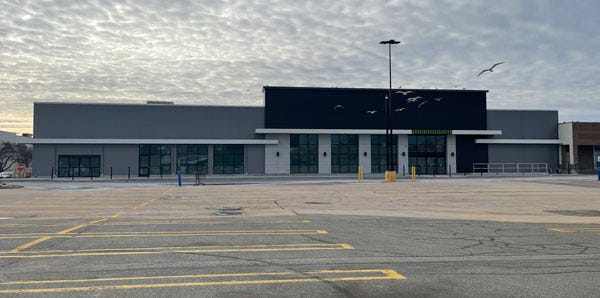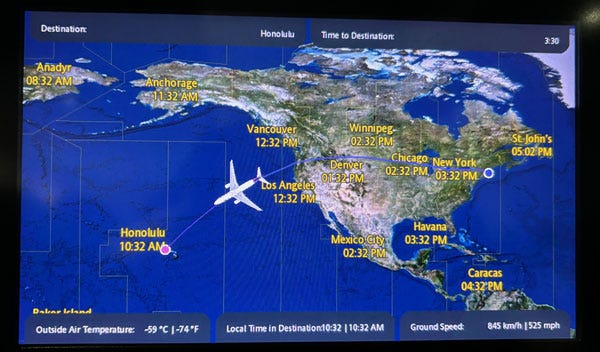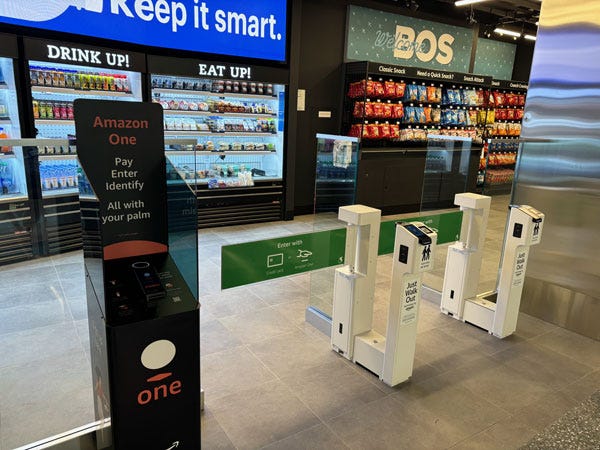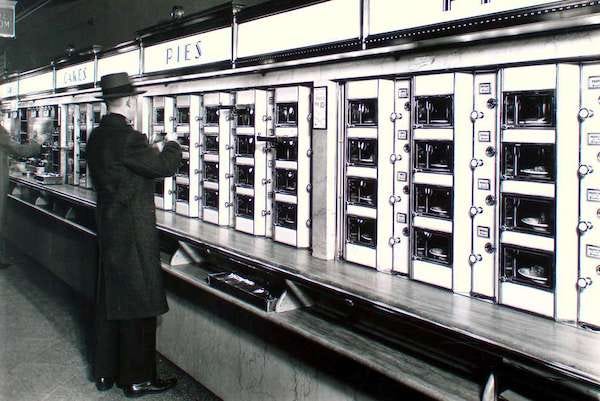Welcome to Willoughby Hills!
Every Wednesday, I offer a few short ideas that I hope will inspire you to do some more reading, thinking, and exploring. Let’s take a little walk together and see where the path leads…
The Longest Flight
I will be trying to take things a bit easier this week, as I am on vacation with my family.
We spent most of yesterday flying from Boston to Honolulu, fortunately on a nonstop flight. In fact, it wasn’t just any nonstop flight, but it’s the longest direct flight in the United States, clocking in at 5,095 miles and taking about 11 hours.
We didn’t consider that superlative when we were booking, but it’s an interesting notch in the belt I suppose.
My wife spent several of her formative young years on Oahu and still has many friends and family members here. Still, as I’ve been thinking more about the effects of colonization, I have mixed feelings about being here and am trying to find ways to impact locals, especially Native Hawai’ians, rather than just make Mainland companies wealthier.
The strangeness of Hawai’i as a U.S. state was especially noticeable on our flight. It took us a little over five hours to cross the entire Mainland of the U.S., but as we reached the Pacific coast over Oregon, we still had another five or so hours flying over open water to reach Honolulu.
I hope to write more about this in a future issue, but again, I’m trying to take things easier over the next week and enjoy time with my kids (they’re asleep in the next room as I write this now).
Automated Airport Store
We departed for our flight out of the newly renovated Terminal E at Boston Logan, which is mostly reserved for international flights on large planes. Most airport services were closed for our early morning departure, but there was one that seemed worth noting.
I’ve written before about visiting the Amazon Go automated grocery store in Seattle. Basically, I had to download a special app to enter, scanned that app at an entry point, then shopped and exited without paying. A series of scales, cameras, and sensors tracked my moves and purchases, sending me a receipt afterwards.
When I first stopped in Amazon Go in 2018, it seemed like Amazon was positioning itself to dominate the grocery industry. They had just purchased Whole Foods Market in 2017 and have since been rolling out their Amazon Fresh grocery stores around the country.
Strangely, we had a big building boom of Amazon Fresh stores in the Boston area and southern New Hampshire more than a year ago, although to my knowledge at least, I have not seen one in operation yet. They have their exterior treatments, but still have no signage and are not open.

At Logan Airport yesterday, one of the few stores that was open was a new Hudson News concept called “Hudson Nonstop.” Upon closer inspection, it looked like a smaller, reskinned version of Amazon Go.
In fact, that’s basically what it was. Entry was done either with a credit card or a palm reader from Amazon One (which is also in my local Whole Foods now and it freaks me out for some reason). Purchases were tracked by cameras and sensors and there was no need to pay at the end- simply exit through the turnstile and get billed.
Amazon Go was an interesting concept and it fits oddly better in an airport (or corporate cafeteria or resort) than it does on a city street to me. Still, it seems like the licensing of the technology to niche cases like airports isn’t quite the grocery domination Amazon had planned five or so years ago. Is this a change in strategy, an abandonment of the concept in favor of licensing tech, or is it an addition to other offerings?
It’s easy to get lost in the high tech-ness of the store, but it also felt very similar to the 100 year old concept of the Automat, essentially a cafeteria of vending machines which were popular in the Northeast in the early 20th century. If you’re curious, here’s a little article about the history of automats.
I publish new issues every Wednesday and Sunday. Sign up to always receive the latest issue and support my work:
Other Wednesday Walks
If you’ve missed past issues of this newsletter, they are available to read here.









